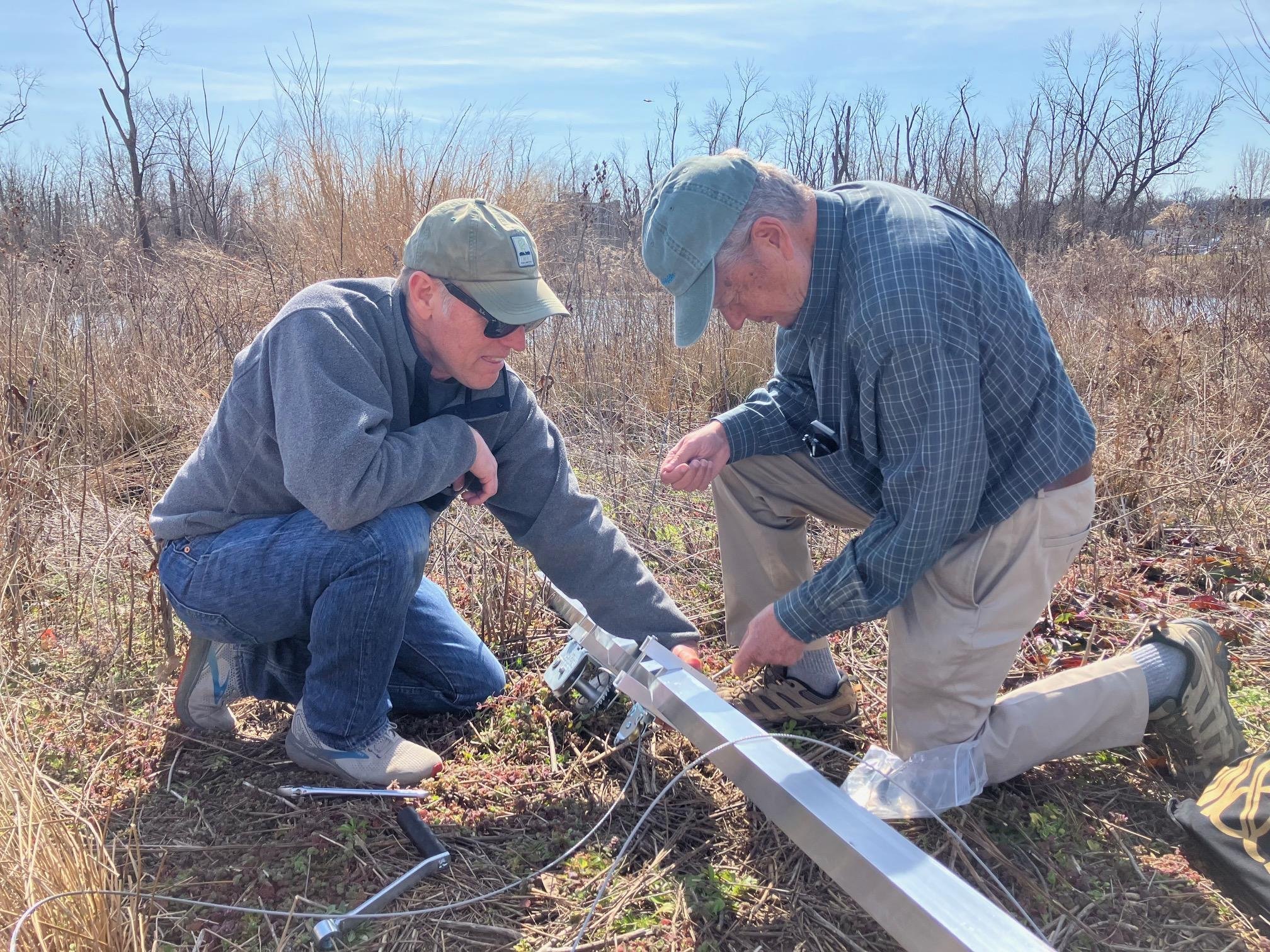Photo: Purple Martin house volunteer team, Tina Dudley
Tina Dudley
Kurt Moser and Greg Butcher working on the winch system for raising and lowering the gourds. Photo: Tina Dudley.
As part of Stretch Our Parks, volunteers worked with the Four Mile Run Conservatory Foundation to install a Purple Martin colony at the end of February in Alexandria’s Four Mile Run Park. ASNV purchased the needed equipment thanks to fundraising efforts by the Nextgen Birders for Conservation group, an initiative by ASNV to cultivate the next generation of birders and wildlife stewards.
The raised structure, depicted above with only one gourd, is now finished and has all 12 gourds installed. Blockers are in place to discourage nest stealing before the Purple Martins return to Four Mile Run in the next month or so. Photo: Tina Dudley.
Purple martins are our largest swallows - beautiful, acrobatic birds that swoop and dive, eating flying insects that hover over the water. They are secondary cavity nesters—unlike woodpeckers, they do not excavate their own nest cavities. Instead, they use existing cavities, either naturally occurring or created by other animals. Traditionally they used old woodpecker holes or natural cavities in dead trees or on cliff or rock ledges. But thousands of years ago, people began providing man-made housing for the Purple Martins in the form of dried, hollow gourds. Over time, the birds nested successfully in these man-made homes. The availability of those hollow gourd nests, paired with the decline of natural cavities resulting from development, led to a complete behavior shift in the eastern species.
Andreana Lin, Kurt Moser, Greg Butcher, Jacob Roberts and Luke High pose with the gourds after assembling Purple Martin balconies on the gourds. Photo: Tina Dudley.
Four Mile Run is a 9.4-mile-long stream that starts near Interstate 66, at Gordon Avenue in Fairfax County, and proceeds southeast through Falls Church to Arlington County. Most of the stretch is parkland and is paralleled by two paved non-motorized multi-use trails, the Washington & Old Dominion Trail and the Four Mile Run Trail. You can find the new colony on a peninsula that juts out into the stream. It’s conveniently sited across from the observation deck on the Arlington side of Four Mile Run and is at least 40 feet from the nearby trees. See the location below if you’d like to visit to check it out in person.
Map showing the location of the new Purple Martin colony at Four Mile Run
A special thank you to Kurt Moser from Four Mile Run Conservancy Foundation who finished the installation of the gourds after additional drilling was needed off-site.
We are hopeful that Purple Martins will take up occupancy in the colony this year. If so, we will be looking for volunteers to help with weekly monitoring checks to collect citizen science data on the nests, in accordance with recommendations by the Purple Martin Conservation Association. This is a great opportunity for those interested in seeing young birds up close and learning about how to be a Purple Martin landlord. If you are interested in helping, please contact Meg Oakley for more information.




